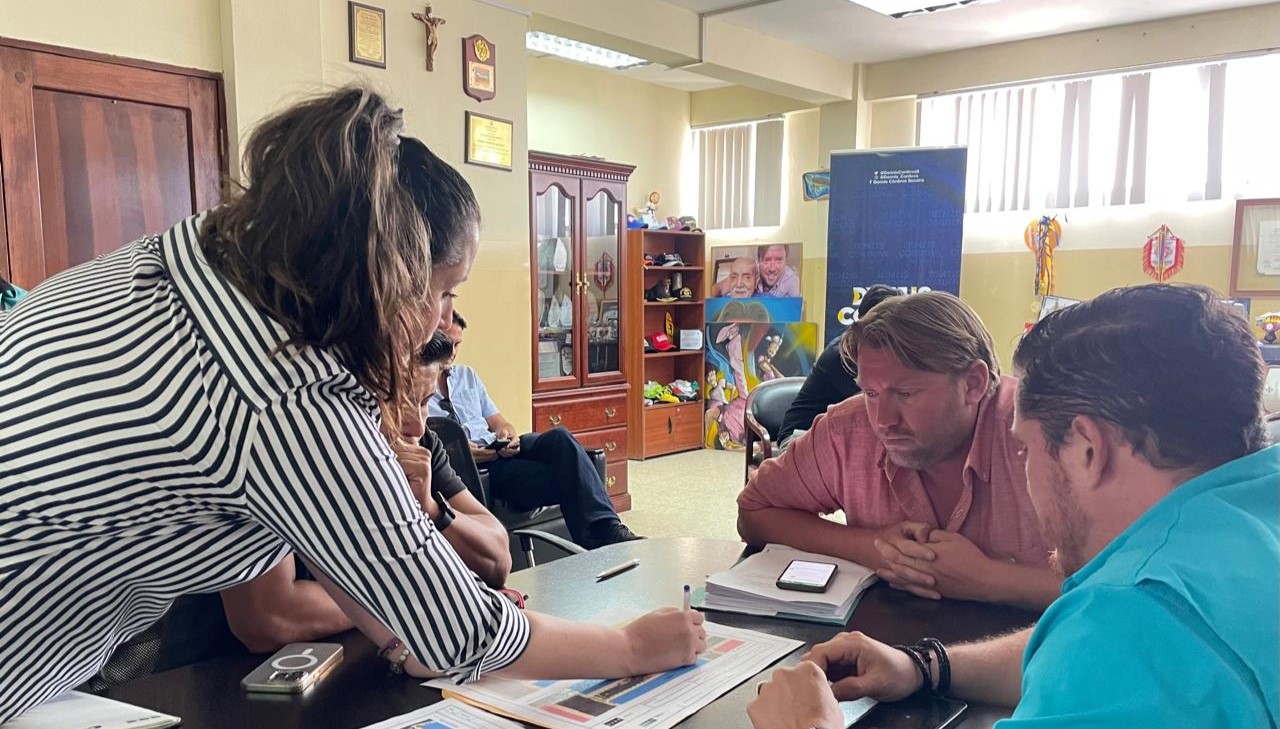
Movidana showing safe road designs with evidence-based interventions to the Mayor of Salinas and the Director of Mobility. © Movidana
More than 1,500 school children pass the intersection at Avenida Carlos Espinoza and Calle 7, a critical intersection near two of the largest schools in Salinas, Ecuador. In May 2024, Fundación Ciudadana de Movilidad y Seguridad Vial (Movidana) carried out a Mobility Snapshot at the intersection, which highlighted urgent safety issues, including the absence of road signs and signals, traffic calming, and pedestrian crossings. Using the snapshot, Movidana is building collaboration with local authorities, the community, and potential private sector partners to implement changes and lay the groundwork for further improvements.
Movidana has held meetings and gained the support of the mayor of the city and other government officials, in particular the Director of Mobility, who has become a strong ally. This support has been crucial in implementing interventions to improve safety at the intersection. “So far, the street directly leading to the schools has been converted from a bi-directional street to one-way. This change has reduced traffic conflicts, particularly among school children who walk to and from school or take public transportation,” says Pamela Naranjo, Movidana.
Movidana has developed a road design that would make the intersection safer through evidence-based interventions such as 30 km/h signages, traffic calming, and pedestrian facilities, which it has presented to government authorities. The mayor has committed to actively seeking resources to implement the proposed designs. Currently, tactical urbanism measures for traffic calming and pedestrian facilities are being deployed to further reduce vehicle speeds and improve pedestrian safety at the intersection. Tactical urbanism measures incorporate quick, visible actions intended to demonstrate the immediate benefits of road safety improvements, building momentum and paving the way for more permanent infrastructure upgrades.
Movidana has also taken a community approach to their advocacy, partnering with the principals of both schools to conduct road safety activities for students. It is also exploring funding partnerships with private companies, recognizing the need for additional resources to fully implement their vision. Movidana has also identified three potential corporate sponsors and are in discussions to secure their involvement and believes that a combination of government backing, and private sector support will be critical to scaling up their successful efforts. The progress made so far shows the impact of data-driven advocacy and strategic partnerships in ensuring safe mobility which is crucial for achieving the Global Plan targets.
“The Mobility Snapshots has been fundamental for us to demonstrate, with specific data, the need for measures that improve road safety in school environments. The data collected has allowed us to demonstrate to the mayor, the need for interventions that safeguard the lives of vulnerable users. We are convinced that our environment shapes us, and therefore we advocate for safer infrastructure,” says Pamela.
Movidana’s Mobility Snapshot advocacy was supported through a small grant from Michelin.